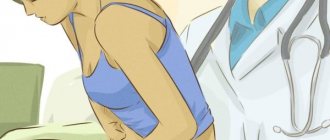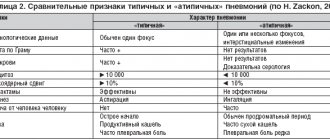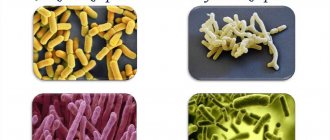Risk factors
Gallbladder dyskinesia is a polyetiological condition, so doctors need to take into account all possible forms of predisposition to the disease.
It is believed that gallbladder dysfunction may be associated with the patient's lifestyle, heredity and dietary habits. Key risk factors
- Family history of functional diseases of the gallbladder and its ducts. Hereditary factors are often associated with anatomical abnormalities.
- Infectious processes in the liver and bile ducts. Primarily these are hepatitis A and B.
- Surgical treatment of abdominal organs, abdominal trauma.
- Asthenic physique and psychoneurological disorders, accompanied by anxiety and apathy.
- Poor nutrition: excess fatty foods in the diet, snacks before bed, insufficient fluid intake.
- Chronic stress and insomnia.
- Insufficient physical activity.
- Diabetes.
Many risk factors can be eliminated with the help of a therapeutic diet and timely treatment of primary diseases of the gastrointestinal tract.
Types of dyskinesia
Not every gastroenterologist can diagnose the presence of the disease in a timely manner. The task is further complicated by the fact that dyskinesia has several forms of occurrence. So, today experts propose to classify the disease:
1. Depending on the origin:
- Primary dyskinesia. It occurs mainly in patients with asthenic physique and mental-emotional instability, neuroses. It occurs against the background of menopause, problems with the thyroid gland, and various diseases of the endocrine system.
- Secondary dyskinesia. Develops against the background of duodenitis, chronic gastritis and other diseases of the gastrointestinal tract of various etiologies. In the absence of proper treatment for dyskinesia, the patient experiences an exacerbation of the diseases that provoked its occurrence.
2. Depending on the nature of the problem:
- Hypertensive-hyperkinetic type. Appears when the gallbladder begins to constantly contract intensely. As a rule, this happens when the patient takes spicy dishes with a lot of spices and/or seasonings. It occurs rarely and mainly in young people.
- Hypotonic-hypokinetic type. It is characterized by slow movement of bile due to excessive relaxation of the biliary tract. It occurs mainly in overweight people and those who have a sedentary lifestyle.
There is also a mixed form of dyskinesia, combining the characteristic features of hyperkinetic and hypokinetic types.
Pathogenesis
Normally, the evacuation of bile is a coordinated process: sequential contraction of the smooth muscles of the body and neck of the bladder leads to the reflux of fluid into the bile ducts. After cholecystokinin stimulates the relaxation of the sphincter of Oddi, the secretion enters the small intestine and participates in digestion. The nervous system provides activation or inhibition of the functions of the gallbladder, depending on external factors. Specialists are rarely able to determine which link of regulation has changed when a pathology occurs.
Dyskinesia of the gallbladder is primarily manifested by uneven contraction of different parts of the organ. Thus, a combination of rapid contraction of the bladder neck with weakened activity of the muscles of the body of the organ is possible. As a result, bile is not completely excreted, and the walls of the bladder are stretched, after which abdominal pain occurs. Additional symptoms are often caused by other autonomic disorders that affect the pain threshold. A long delay in the excretion of bile is complicated by the formation of stones and complete blockage of the ducts.
Classification
Gastroenterologists classify gallbladder dyskinesia according to the clinical manifestations of the disease, etiology and nature of the motility disorder. All these signs help to choose the optimal treatment for the disease.
Main types of dyskinesia
- Hypertensive motility disorder, manifested by rapid uncoordinated contractions of the gallbladder walls. In most cases, this form of dyskinesia is diagnosed in children and young patients. The main symptom is acute paroxysmal pain that lasts for several minutes.
- Hypotonic motility disorder, in which the gallbladder muscles contract too rarely or not strongly enough. Hypomotor dyskinesia is usually found in older patients. The pain is less acute and lasts longer.
Another classification includes secondary and primary forms of the disorder. Dyskinesia can occur independently due to a violation of innervation, an anatomical defect or hormonal imbalance, but more often a secondary form of the disease is diagnosed, which develops against the background of pathologies of other organs.
Patient Reminder
Treatment for dyskinesia depends on its type. With hypomotor bile ducts, it is important to activate the motility of the gallbladder and its ducts. For this purpose, choleretic drugs are usually used. For the hypermotor type, antispasmodics are mainly prescribed, which help relax the bile ducts and reduce pain.
For people suffering from the hypermotor type of dyskinesia, doctors recommend remembering the rule of the three Fs. It is as follows: fatty, fried and egg yolks should be excluded from the menu - while consuming such foods and dishes, patients usually become ill. If you have a hypomotor type, you can eat eggs.
With the hypermotor type, the diet should contain a lot of foods rich in magnesium - it helps reduce spasms. These include buckwheat, millet, whole grain bread (but not baked goods!), and greens.
| Drugs | |
| Choleretic | Antispasmodics |
Remember, self-medication is life-threatening; consult a doctor for advice on the use of any medications.
Buy the printed version of the directory at kiosks in your city or order it from the editorial office by phone or email [email protected] with the mark PM (indicate your full name, postal address and telephone number in the letter).
Symptoms and signs
The clinical picture of the disease depends on the type of gallbladder motility disorder, the patient’s age and concomitant pathological conditions. The pain syndrome may last for several minutes or persist throughout the day. In general, the nature of pain is an important diagnostic marker.
Other signs:
- nausea and vomiting;
- loss of appetite;
- bloating;
- loose stools or constipation;
- bitterness in the mouth;
- yellowing of the mucous membranes and skin;
- insomnia;
- weakness and fatigue;
- dizziness;
- emotional lability.
Almost all symptoms of gallbladder dyskinesia are nonspecific, so accurate diagnosis is carried out only with the help of special examinations.
Symptoms of the disease
The symptoms of the disease are similar to many other gastrointestinal diseases. This makes it quite difficult to diagnose in the early stages. Therefore, you should consult a doctor as soon as you notice the following symptoms:
- Discomfort in the gallbladder area, bloating, feeling of heaviness in the abdomen.
- Prolonged (about half an hour) mild pain in the right hypochondrium, gradually spreading to the entire right half of the body or its individual parts.
- Bitterness in the mouth, nausea.
- Loss of appetite and the resulting weakening of the body.
- Change in color of stool to a lighter color.
- Problems with stool (and this can be either constipation or diarrhea).
- Increased concentration of bilirubin and cholesterol in bile.
- Pain in the heart area, rapid heartbeat, hypotension.
- Increased irritability, migraine, insomnia.
In the absence of timely treatment, the patient rapidly develops concomitant diseases - cholestasis, cholecystitis, etc. Bile clots first accumulate in the gallbladder, and then stones appear.
Diagnostics
To conduct an examination, the patient must contact a gastroenterologist. During the appointment, the doctor will ask the patient about complaints, collect anamnestic data and conduct a physical examination. An external examination allows the specialist to detect jaundice, bloating and pain in the right hypochondrium, but these pathological signs are not always present. The final diagnosis is determined after instrumental and laboratory studies.
Necessary diagnostic procedures
- Laboratory research. First, a blood test is performed to assess the number of white blood cells, determine liver function, and rule out infectious diseases. It is also recommended to test for Helicobacter.
- Ultrasound visualization of the gallbladder. This study does not always detect dyskinesia, but in some cases doctors detect an increase in organ volume and other anomalies. It is also possible to carry out imaging after eating and choleretic drugs: in patients suffering from dyskinesia, the volume of the gallbladder decreases by only 35-40%.
- Radionuclide diagnostics. The introduction of a special chemical marker into the patient’s body gives the specialist the opportunity to assess the functions of the liver and gallbladder.
- Retrograde cholangiopancreatography is a visual examination of the bile ducts and mucous membrane of the gastrointestinal tract.
- Computed tomography or magnetic resonance imaging of the abdominal organs. Obtaining three-dimensional images of these anatomical structures allows the doctor to more accurately determine the cause of the disease.
A gastroenterologist may order a limited number of tests to make a diagnosis after requesting a medical history and reviewing symptoms.
Our services
The administration of CELT JSC regularly updates the price list posted on the clinic’s website. However, in order to avoid possible misunderstandings, we ask you to clarify the cost of services by phone: +7
| Service name | Price in rubles |
| Gastroscopy (videoesophagogastroduodenoscopy) | 6 000 |
| Colonoscopy (video colonoscopy) | 7 000 |
| Ultrasound of the abdominal organs (liver, gall bladder, pancreas, spleen) | 3 800 |
| Fluoroscopy and radiography of the stomach | 4 800 |
All services
Make an appointment through the application or by calling +7 +7 We work every day:
- Monday—Friday: 8.00—20.00
- Saturday: 8.00–18.00
- Sunday is a day off
The nearest metro and MCC stations to the clinic:
- Highway of Enthusiasts or Perovo
- Partisan
- Enthusiast Highway
Driving directions
Therapeutic treatment
If impaired motility of the gallbladder is not complicated by severe structural pathologies, doctors prescribe only drug therapy. The main task is to normalize the functioning of the gallbladder and facilitate the evacuation of bile into the duodenum. Before prescribing specific medications, it is necessary to determine the type of disease.
Possible destinations:
- Myotropic antispasmodics that relax the smooth muscles of the gallbladder. These drugs are necessary for the hypertensive form of the disorder.
- Choleretic agents are substances that stimulate the functions of the liver and gallbladder. If the patient has too active muscle contractions, cholespasmolytics are needed to slow down the motility of the organ and eliminate spastic phenomena.
- Cholekinetics and prokinetics for weakened gallbladder motility. These drugs simultaneously improve the contraction of the organ and facilitate the release of bile into the intestines.
- Additional medications: anti-inflammatory drugs and antidepressants to eliminate complications of the disease.
In addition to drug therapy, patients are required to be prescribed a therapeutic diet. The recommended diet depends on the form of the motor disorder, but most often patients are prohibited from consuming too fatty foods and alcoholic beverages.
Dyskinesia (dysfunction) of the biliary tract
Treatment for gallbladder dysfunction includes:
- mode,
- diet therapy;
- drug therapy;
- physiotherapy;
- hydrotherapy;
- Spa treatment.
Treatment of patients with dysfunction of the gallbladder and sphincter of Oddi is often carried out on an outpatient basis.
Treatment of hypertensive type of gastric dyskinesia:
- With the hypertensive type of dyskinesia, a state of psycho-emotional comfort and peace is very important for patients. After the elimination of the pain syndrome and signs of exacerbation, the patient’s regimen expands.
- Diet therapy is essential. The general principles of the diet are a diet with frequent meals of small amounts of food (56 meals a day) with the last meal immediately before bed, which promotes regular emptying of the bile ducts and eliminates bile stagnation.
For the hypertensive type, it is recommended to limit foods that stimulate bladder contractions - animal fats, meat, fish, mushroom broths, eggs.
A good effect in this form of functional disorders is provided by drugs belonging to the group of cholespasmolytics.
The group of cholespasmolytics and anticholinergics includes the following drugs:
- Atropine sulfate, 0.1% solution is prescribed orally, 5-10 drops. appointment.
- Bellalgin (analgin 0.25 g; anesthesin 0.25 g; belladonna extract 0.015 g; sodium bicarbonate 0.1 g) take 0.51 tablets 2-3 times a day.
- Besalol (belladonna extract 0.01 g, phenyl salicylate 0.3 g) is prescribed 1 tablet. 2 times a day.
- Metacin is used 1 tablet. 2-3 times a day. For colic, the drug is injected subcutaneously or into the muscle, 1 ml of 0.1% solution.
- Platiphylline is prescribed 1 tablet. (0.005 g) 2-3 times a day before meals for 100 days. For colic, the drug is administered subcutaneously, 1 ml of a 2% solution 1-3 times a day.
- Euphylline (theophylline 80%; ethylenediamine 20%) 1 tablet. (0.15 g) 1 time per day.
- In case of hypertensive dysfunction of the gallbladder, cholespasmolytics of synthetic origin are more often used.
- Noshpa (drotaverine hydrochloride) is prescribed in tablets of 0.04 g 1-3 times a day for 14 days or more or in ampoules of 2 ml of a 2% solution intramuscularly or intravenously 1-2 times a day.
- Papaverine (papaverine hydrochloride) is prescribed orally in tablets of 0.04 or 0.01 g 3 times a day or intramuscularly (intravenously) 2 ml of a 2% solution.
Combined cholespasmolytics include nicoshpan (nicotinic acid 22%; drotaverine hydrochloride 78%) 20 mg 1-2 times a day and papazole (dibazol 0.03 g; papaverine hydrochloride 0.03 g) 1 tablet. 2-3 times a day The disadvantage of drugs in this group is their non-selectivity, i.e. they act on the entire smooth muscle latura, including the urinary tract and blood vessels, and there is also the possibility of developing hypomotor dyskinesia and hypotension of the sphincter apparatus of the gastrointestinal tract.
The modern drug duspatalin (mebeverine), belonging to the group of myotropic antispasmodics, has a direct blocking effect on the fast sodium channels of the myocyte cell membrane, which disrupts the influx of Na+ into the cell, slows down the depolarization processes and blocks the entry of Ca2+ into the cell through slow channels, preventing the development of muscle spasm and pain syndrome. Duspataline has no effect on muscarinic receptors, which means that there are no side effects such as dry mouth, blurred vision, tachycardia, urinary retention, constipation, and weakness. The drug has a prolonged action; it is prescribed no more than 2 times a day in the form of 200 mg capsules for 2-4 weeks. By increasing the flow of bile into the small intestine, myotropic antispasmodics help improve digestion processes and activate intestinal motility, which leads to normalization of stool. Myotropic antispasmodics include selective blockers of calcium channels of smooth muscles: minavirin bromide (dicetel), it is prescribed 50-100 mg 3 times a day; spasmolin (otilonium bromide).
Odeston (7-hydroxy-4-methylcoumarin) is a myotropic antispasmodic with a choleretic effect. The drug enhances the formation and separation of bile, has a selective antispasmodic effect on the sphincter of Oddi and the sphincter of the gallbladder, which promotes good outflow of bile from the liver and biliary tract. Odeston has an indirect choleretic effect by facilitating the passage of bile into the gastrointestinal tract, which enhances the recirculation of bile acids. The advantage of the drug is the absence of adverse effects on the smooth muscles of the vascular walls and intestinal muscles; it does not increase pressure in the bile ducts and also does not impair the secretory function of the digestive glands and the absorption of nutrients. Thus, odeston helps improve digestion and peristalsis, normalize stool, eliminate constipation, and has a positive effect in cases of sphincter of Oddi dysfunction, dyskinesia of the gastrointestinal tract, chronic cholecystitis (including uncomplicated calculous), as well as in cases of disruption of the digestive processes caused by a deficiency of bile in the intestine. The daily dose of odeston is 600 mg (1 tablet 3 times a day). The duration of treatment is individual (from 1 to 3 weeks).
For biliary dyskinesia, herbal remedies such as arnica (flowers, tincture), valerian (rhizomes with roots), elecampane (rhizomes with roots), St. John's wort (herb), lemon balm (herb), peppermint (leaves), calendula are used (flowers), marshweed (herb), sage (leaves), convaflavin, olimetin, holagol, calamus, immortelle budra, capitol, snake knotweed, gorse, oregano, St. John's wort, centaury strawberry, calendula, willowherb, horseweed, hoofed grass, nettle , oregano, corn silk, cinquefoil erecta, flax, juniper, mint, dandelion, shepherd's purse, plantain, tansy, wormwood, kidney tea, wheatgrass, strap, rose, chamomile, knotweed, thuja, dill, fennel, hops, chicory, thyme, blueberry, celandine, sage, rosehip
In case of bladder dysfunction caused by increased tone of the sphincters of the biliary system, the intake of medications that have a choleretic and hydrocholeretic effect (bile acids, enzyme preparations, infusions and decoctions of choleretic herbs, synthetic choleretic drugs, gastric juice, etc.) is limited.
In order to stimulate bile secretion, reduce the tone of the common bile duct, which increases the flow of bile into the duodenum, cholekinetics are used - drugs that cause the production of cholecytokinin, which controls the kinetics of the gallbladder and sphincter of Oddi. The effect is due to the irritating effect of drugs of this group on the receptor apparatus of the duodenal mucosa.
In order to stimulate the formation and outflow of bile, as well as an antispasmodic effect, tea is used, which includes the following plants: spinach leaves (Folia Spinaciae), thistle fruits (Fructus Cardui Mariae), cinquefoil herb (Herba Anserinae), celandine herb (Herba Cheh' dorm), yarrow herb (Herba Millefolii), licorice root (Radix Liqumtae), rhubarb rhizome (Rhizoma Rhei), dandelion root and herb (Radix Taraxaci p. Herba), turmeric rhizome, turmeric oil (Rhizoma Curcumae, Oleum Curcumae) , aloe extract (Extractum Aloes).
A number of medicinal plants have a cholekinetic effect: (berberine sulfate), extracts from medicinal plant materials (calamus, rhizomes), barberry (tincture of leaves), sandy immortelle (flowers), lingonberry (leaves, shoots), blue cornflower (flowers), watch trifoliate (leaves), knotweed (herb), oregano (herb), calendula (flowers), coriander (fruit), juniper (fruit), dandelion (roots), shepherd's purse (herb), rhubarb (root), chamomile (flowers ), common thyme (herb), caraway (fruit), yarrow (herb), rose hips (fruit, cholosas), fennel (fruit).
The approximate treatment regimen for hypermotor dyskinesia of the gallbladder is the use of antispasmodics for rapid relief of pain (phosphodiesterase inhibitors - noshpa, papaverine) or anticholinergics (atropine, platyphylline) in combination with hepabene to reduce the tone of the sphincter of Oddi.
Treatment of hypotonic type of gastric dyskinesia. In the treatment of gallbladder dysfunction of the hypotonic type, it is advisable to expand the motor regimen.
These individuals tolerate weak broths, fish soup, cream, and sour cream well. Food with sufficient vegetable fat content (up to 80 g/day) and eggs are used. For 2-3 weeks, vegetable oil is prescribed, 1 tsp. 2-3 times a day 30 minutes before meals. To prevent constipation, raw vegetables are recommended: carrots, pumpkin, zucchini, greens. Bran has a pronounced effect on the motility of the biliary tract (1 tablespoon is brewed with boiling water and added as a gruel to various side dishes).
Prokinetics indicated: cisapride 5-10 mg 3 times a day; domperidone 5-10 mg 3 times a day 30 minutes before meals; metoclopramide 5-10 mg per day.
Drugs from the choleretic group, as well as bile acid drugs, have a good effect.
Drugs containing bile acids include the following:
- Lyobil (lyophilized bovine bile), tablets 0.2 g, 1-2 tablets. 3 times a day after meals. Course 1-2 months.
- Decholin (sodium salt of dehydrocholic acid), ampoules of 5 ml of 5% and 20% solution, administered intravenously 5-10 ml once a day.
- Cholecin (a compound of a salt of deoxycholic acid and a sodium salt of higher fatty acids) is prescribed in 1-2 tablets. 3 times a day before meals.
- Hologon (dehydrocholic acid), tablets 0.2 g, 0.2-0.25 g once a day. The course of treatment is 2-3 weeks.
Preparations of plant origin and medicinal plants that have a choleretic effect have a good effect on the function of the gallbladder: aqueous extracts from medicinal plant raw materials calamus (rhizome), barberry (leaf, root), birch (buds, leaves), immortelle sandy (flowers), barberry multi-veined (herb), knotweed (herb), goldenweed (herb), coriander (fruit), corn (columns with stigmas), burdock (roots), tansy (flowers), wormwood (herb), rowan (fruit ), hops (cones), chicory (herb), choleretic herbs No. 1 and 2, combined herbal remedies (holagogum, cholagol, holaflux, hepatofalplanta, hepabene, kurepar, flamin, fumetere, etc.).
In the presence of hypomotor dysfunction of the gallbladder against the background of increased tone of the sphincters of the extrahepatic bile ducts, Odeston 200 mg 3-4 times a day is added to drugs that enhance the contractile function of the gallbladder.
Effective in the treatment of hypomotor dyskinesia of the gallbladder with normal motor function of the gastrointestinal tract is the combined use of prokinetic drugs (metoclopromide, or domperidone, or 5-10% solution of magnesium sulfate, 1 tablespoon 2-4 times a day for 10-15 minutes before meals) with choleretic drugs containing bile acids or herbal products (allochol, cholenzyme, hepabene). Long-lasting biliary sludge during or after this therapy is an indication for the use of UDCA drugs for up to 3-6 months.
To correct hypomotor dyskinesia of the gallbladder in case of its combination with gastrointestinal tract and/or duodenostasis, a 2-week (if indicated and longer) treatment regimen is used, including prokinetics; choleretic preparations of plant origin or containing bile acids; antibacterial drugs in the presence of symptoms of bacterial contamination of the small intestine.
In the case of hypomotor dyskinesia of the gallbladder and colon, 24-week therapy is recommended, which includes prokinetics and choleretic drugs containing bile acids.
When hypofunction of the gallbladder is combined with intestinal hypermotility and dysbiosis, treatment with hepabene in combination with hilacomfort is indicated. In addition to these medications, intestinal adsorbents such as smecta, phosphalugel, etc. can be prescribed.
It is very effective to use probeless tubes with a decoction of rosehip, corn silk, warm mineral water, 10-25% solution of magnesium sulfate (1-2 tablespoons 2 times a day) or 10% solution of sorbitol or xylitol (50 ml 2 times in a day).
Method of “blind” probing according to Demyanovich
“Blind” probing is prescribed 23 times a week for 1 month. Probing is carried out as follows:
- In the morning on an empty stomach, the patient is given to drink 15-20 ml of a 33% solution of magnesia sulfate, heated to 40-50 ° C (instead of magnesia sulfate, you can use 1-2 egg yolks, warm olive or corn oil; 10% solutions of sorbitol, xylitol; warm mineral water type Essentuki-17; a glass of beet juice).
- It is necessary to place the patient on the right side on a cushion with a heat pad or paraffin application on the right side.
- During the procedure, take deep breaths (to open the sphinter of Oddi) - 23 breaths every 5 minutes.
Patients with biliary tract dysfunction are advised to use acupuncture and rational psychotherapy, which improves the psycho-emotional state, reduces the intensity of autonomic reactions and pain. It is important for the doctor to contact the patient, explain the causes of the disease and possible ways to eliminate it. Trust in the doctor largely determines the success of treatment.
Pharmacological correction of psychoneurological disorders is carried out with antidepressants. For this purpose, tricyclic antidepressants are used: amitriptyline, drugs with a serotonin reuptake mechanism (fevarin, Framex, etc.).
For vegetative-vascular dystonia and neurotic-neurosis-like syndrome, “minor” tranquilizers (Elenium, Tazepam, etc.) and sedatives are recommended: tincture of valerian, motherwort, 40 drops. 3-4 times a day or an infusion of these plants (10 g per 200 ml) 1 tbsp. l. 4 times a day.
Physiotherapeutic procedures are used in the treatment of gallbladder dysfunction:
- To improve microcirculation and trophic processes in patients with hypertensive dyskinesia, inductothermy is indicated.
- For hypotension, diadynamic currents and faradization of the gallbladder are prescribed.
- UHF has anti-inflammatory and bactericidal effects.
- Microwave therapy improves blood flow, tissue trophism, enhances redox processes, has anti-inflammatory and analgesic effects, and relieves spasms of the biliary tract.
- Applications of paraffin and ozokerite improve blood flow and tissue trophism, have a resolving effect and the ability to cause an antispasmodic effect in hypertensive biliary dyskinesia.
- For hypertensive dyskinesias, electrophoresis of a 5% novocaine solution and a 10% magnesium sulfate solution is indicated.
- Baths (pine, pearl) are prescribed every other day, for a course of 10-12 baths.
- Showers (rain, fan, circular) are recommended for 35 minutes, 10-15 procedures per course.
- Massage of the cervical collar area No. 10. Galvanic collar on the collar area.
- Electrophoresis of calcium chloride, bromine solution on the collar area, for a course of 7-10 procedures. Electrophoresis of 5% novocaine solution, 0.1% papaverine solution, 5% magnesium sulfate on the area of the right hypochondrium, for a course of 7-10 procedures.
Forecast:
The prognosis for dyskinesia is favorable. Working capacity has been preserved.
Surgery
An indication for surgical intervention may be complicated dyskinesia, which cannot be eliminated with drug therapy. Surgery is also prescribed for severe pain and severe digestive disorders. Before surgical treatment, it is important to exclude other pathologies of the gallbladder, such as cholelithiasis or the growth of a malignant tumor. According to modern research, radical treatment is more effective in relieving the symptoms of the disorder.
Depending on the indications and condition of the patient, the doctor may perform an open or laparoscopic cholecystectomy. The operation involves removing the gallbladder. After the intervention, the functions of the digestive system are normalized, but some complications may develop, such as dyslipoproteinemia or dysfunction of the sphincter of Oddi.
Treatment at MC "Harmony"
To completely recover from dyskinesia, a timely diagnosis and properly selected treatment are necessary. “Harmony” is ready to offer both. Our medical center is equipped with modern diagnostic equipment, which allows us to detect the disease in its early stages. A qualified gastroenterologist will help not only cure it, but also reduce the harm it causes to the body to a minimum:
- Select a diet based on foods that stimulate/limit the contraction of the bile ducts (depending on the type of dyskinesia).
- Will help with the treatment of concomitant diseases.
- He will prescribe physical therapy and send you to sanatorium-resort treatment.
Treatment is outpatient, hospitalization is indicated only in the presence of a serious exacerbation of concomitant pathology. Make an appointment and our specialists will help you.
Prognosis and complications
Prognostic data depend on the form of pathology, concomitant diseases and the age of the patient. If gallbladder dyskinesia is not complicated by other disorders, the prognosis is favorable. In most cases, drug therapy can achieve significant improvements.
Possible complications:
- hepatic encephalopathy with prolonged bile retention;
- inflammation of the gallbladder and its ducts;
- the occurrence of secondary infection;
- insufficient supply of nutrients to the body.
To prevent the development of complications, it is necessary to follow a therapeutic diet.
Causes of dyskinesia
In older people, the disease most often develops against the background of chronic gastrointestinal diseases. Improper functioning of the intestines and other organs leads to digestive problems. And this, in turn, causes a deficiency of bile acids and problems with the absorption of beneficial microelements. Outwardly, this manifests itself in the form of ailments (constipation, vomiting, flatulence, etc.). The problem is aggravated by the patient's obesity and metabolic problems.
In the younger generation, the appearance of dyskinesia is more often associated with problems of the central nervous system, as well as various diseases and infections, including:
- Hepatitis.
- Helminthiasis
- Giardiasis
- Damage to the gallbladder, etc.
But this is not the only thing to be wary of. Systematic poor nutrition, constant contact with an allergen, and severe intoxication of the body can also provoke the development of the disease.
Prevention
Many diseases of the digestive system are long-term consequences of an unhealthy lifestyle, so preventive measures help prevent dysfunction of the gallbladder and its ducts. First of all, doctors recommend paying attention to primary pathologies and nutritional habits.
Basic recommendations
- Improving your diet: avoiding too fatty foods, fried foods, alcohol and excess spices. Adequate fluid intake.
- Normalization of body weight and regular physical activity.
- Avoiding stress, treating anxiety.
- Timely detection and treatment of inflammatory processes in the gallbladder and intestines.
- Regular examinations by a gastroenterologist in the presence of chronic diseases of the digestive system.
- Refusal of hormonal contraceptives and somatostatin drugs.
Thus, gallbladder dyskinesia is a common disease manifested by impaired motility of the organ. Insufficient bile secretion can lead to serious complications, so this disorder must be treated when the first symptoms appear. Most often, taking medications and lifestyle changes is enough.
Treatment
Effective treatment of dyskinesia requires an integrated approach. First of all, the diet is adjusted: fatty and cold foods, flour products, as well as foods that provoke flatulence are excluded from the diet. You should take care to change not only your culinary preferences. It is important to follow a diet and give up bad habits.
Therapy is aimed at eliminating the cause that led to the development of dyskinesia, be it a source of chronic infection, helminthic infestation, food allergy, intestinal dysbiosis or vitamin deficiency. Accordingly, antibacterial, desensitizing, antiparasitic or anthelmintic therapy is prescribed. It is quite possible that treatment will be limited to the administration of probiotics and vitamin complexes.
The need to correctly determine treatment tactics once again emphasizes the importance of differential diagnosis, because the treatment approach largely depends on the type of dyskinesia motor disorder. Thus, the hyperkinetic form of the disease dictates the need to prescribe sedatives (herbal sedatives), choleretics (choleretics), and antispasmodics. It would be a good idea to drink well-heated, slightly carbonated mineral water. Non-drug methods also give good results: psychotherapy, reflexology, physiotherapy, treatment with medicinal leeches, massage.
For the hypokinetic form of dyskinesia, the therapeutic approach is different. Experts recommend tonic medications, cholekinetics (drugs that increase bile secretion), herbal medicine, and highly mineralized waters. Treatment without medications is also encouraged: “blind” probing, physiotherapy, physical therapy and massage are used.
Patients suffering from biliary dyskinesia should be observed by a gastroenterologist and neurologist. It is necessary to annually undergo a course of balneological (sanatorium-resort) treatment and take a responsible approach to the implementation of all treatment and preventive recommendations of specialists.
At the CELT multidisciplinary clinic, highly qualified professional doctors with a huge amount of knowledge and practical experience are waiting for you. We create an individual treatment plan for each patient, taking into account personal characteristics.







![Table 3. Pharmacokinetic and pharmacodynamic parameters of fluoroquinolones with a single standard dose taken orally [7, 13]](https://irknotary.ru/wp-content/uploads/tablica-3-farmakokineticheskie-i-farmakodinamicheskie-parametry-ftorhinolonov-pri-odnokratnom-prieme-330x140.jpg)